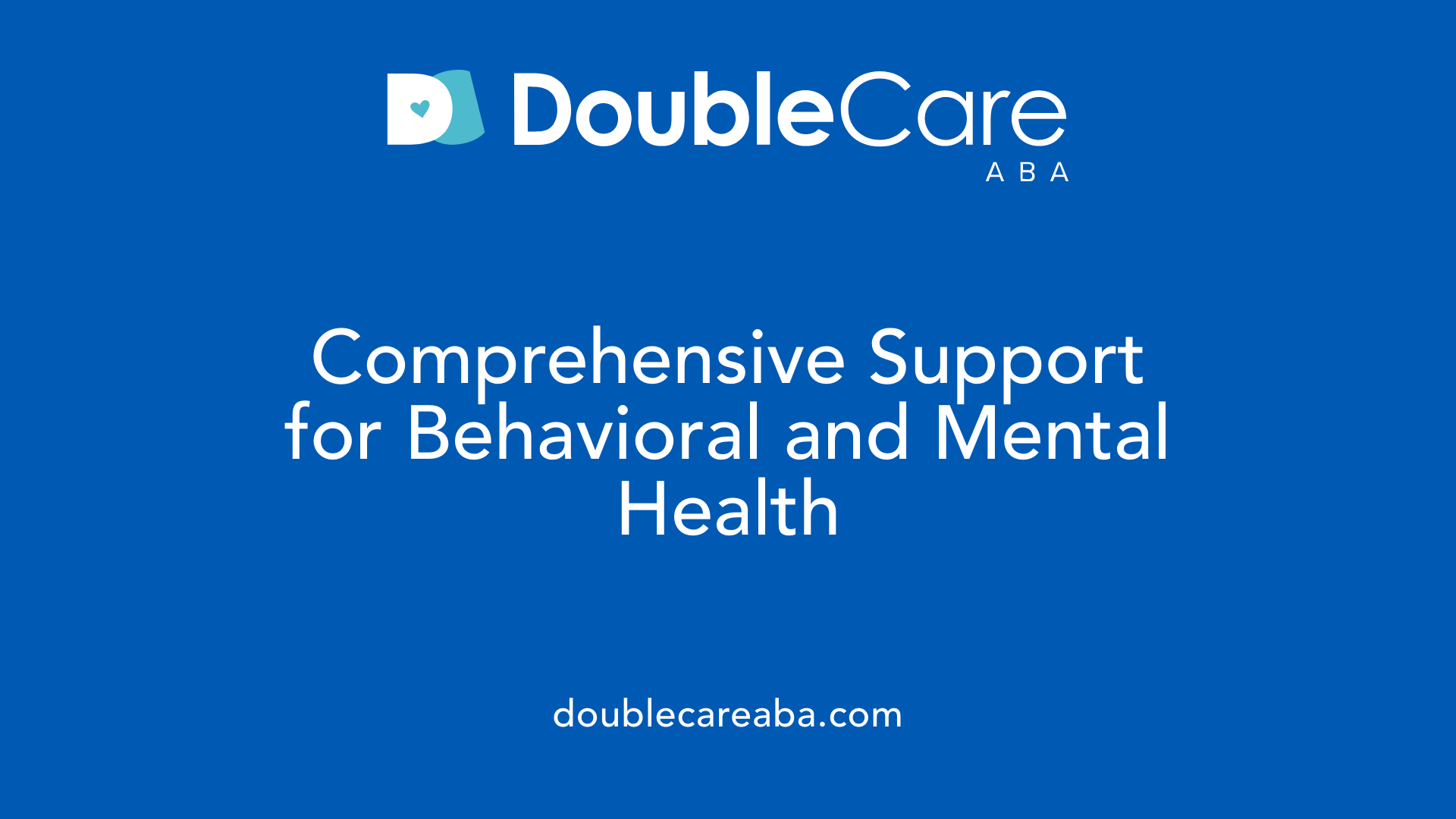Autism and Strategies for Building Social Confidence
Unlocking Potential: Behavioral Strategies to Enhance Social Confidence in Autism

Understanding Autism and the Importance of Social Confidence
Building social confidence in individuals with autism spectrum disorder (ASD) requires a multifaceted approach grounded in evidence-based behavioral therapies. By focusing on reinforcing positive behaviors and reducing challenges, specialized therapies help children develop crucial social skills and self-assurance needed for daily interactions. This article explores key behavioral interventions and strategies designed to empower autistic individuals in their social environments.
Applied Behavior Analysis: The Foundation of Behavioral Therapy for Autism

What is behavior management therapy for autism?
Behavior management therapy for autism focuses on increasing desired behaviors while reducing unwanted ones. This approach helps children develop essential skills and improve their quality of life.
What is ABA and how does it function in autism treatment?
Applied Behavior Analysis (ABA) is a widely recognized method used in behavioral therapy for autism. It involves observing and tracking a child's progress to systematically teach and reinforce skills. ABA uses positive reinforcement to encourage behaviors, making the learning process effective and measurable.
Types of ABA interventions and their specific focus
Several ABA-based therapies target different needs within autism spectrum disorder (ASD):
- Positive Behavioral Support (PBS): Understands why challenging behaviors occur and alters the environment to promote positive behaviors.
- Pivotal Response Training (PRT): Enhances pivotal skills like motivation and communication in natural settings, encouraging development of other abilities.
- Early Intensive Behavioral Intervention (EIBI): Provides personalized, intensive instruction to very young children using one-on-one or small group sessions.
- Discrete Trial Teaching (DTT): Breaks skills into small steps and teaches them systematically with positive reinforcement.
These diverse ABA techniques support tailored behavioral therapy, meeting the unique needs of each child with autism.
Diverse ABA Techniques: Tailoring Interventions to Individual Needs

What are the different types of ABA used to treat autism?
Applied Behavior Analysis (ABA) encompasses several approaches designed to support children with autism spectrum disorder. The main types include Positive Behavioral Support (PBS), Pivotal Response Training (PRT), Early Intensive Behavioral Intervention (EIBI), and Discrete Trial Teaching (DTT).
How does PBS work to improve behavior?
PBS focuses on understanding the underlying reasons for challenging behaviors. By identifying why a problematic behavior occurs, it seeks to modify the surrounding environment to encourage more positive behaviors. This proactive approach helps reduce negative behaviors by addressing root causes rather than just symptoms.
What skills does PRT focus on improving?
Pivotal Response Training targets pivotal skills such as motivation and communication. It emphasizes enhancing these essential areas within the child’s everyday environment. By strengthening these core skills, PRT helps children generalize learning and acquire other related abilities more naturally.
Who benefits from EIBI and what does it involve?
Early Intensive Behavioral Intervention is specifically designed for very young children with autism. It provides tailored, intensive instruction through one-on-one or small group sessions. This approach supports early developmental gains by delivering focused and consistent behavioral teaching.
How does DTT teach skills?
Discrete Trial Teaching breaks down skills into small, manageable steps and teaches them in a controlled setting. Positive reinforcement follows each successful step to encourage repetition and mastery. This systematic method is especially effective for teaching specific skills one at a time.
| ABA Type | Focus Area | Description |
|---|---|---|
| Positive Behavioral Support (PBS) | Behavior causes and environment | Modifies environment to encourage positive behaviors |
| Pivotal Response Training (PRT) | Motivation, communication | Enhances pivotal skills in everyday settings |
| Early Intensive Behavioral Intervention (EIBI) | Early development in young children | Intensive, individualized teaching with one-on-one sessions |
| Discrete Trial Teaching (DTT) | Stepwise skill building | Uses step-by-step instruction with positive reinforcement |
Building Social Confidence Through Behavioral Techniques and Skill Development

How are social skills taught in behavioral therapy for autism?
Social skills training in behavioral therapy involves teaching fundamental abilities such as greeting others, sharing, taking turns, and expressing emotions. This is often achieved through role-playing activities and modeling, where appropriate behaviors are demonstrated and then practiced. These methods provide safe, structured opportunities for children to learn and rehearse social interactions.
What is the role of positive reinforcement in behavior therapy?
Positive reinforcement plays a crucial role by encouraging desired behaviors. When a child exhibits a targeted behavior, they receive an immediate reward, which increases the likelihood that the behavior will be repeated. This approach helps motivate children and strengthens learning outcomes.
How do structured routines help children with autism?
Structured routines and clear expectations create consistent and predictable environments. This predictability reduces anxiety, helping children feel more secure and fostering greater independence in daily activities. Such routines are especially beneficial for children with autism and other developmental challenges.
What is Functional Behavior Assessment (FBA)?
Functional Behavior Assessment is a systematic process that involves observing and analyzing a child’s behaviors to uncover the triggers and purposes behind them. Understanding these factors enables therapists and caregivers to develop personalized intervention plans that effectively address the child’s specific needs.
Why is consistency important in implementing behavior therapy strategies?
Consistently applying behavior therapy strategies across various settings—such as home, school, and community—is essential. This uniformity supports the child in generalizing new skills to different environments, enhancing the overall effectiveness of the therapy.
| Strategy | Description | Purpose/Benefit |
|---|---|---|
| Social Skills Training | Role-playing and modeling of greetings, sharing, turn-taking | Develops practical social interaction skills |
| Positive Reinforcement | Immediate rewards following desired behaviors | Increases frequency of positive behaviors |
| Structured Routines | Clear expectations and predictable schedules | Reduces anxiety and promotes independence |
| Functional Behavior Assessment | Observing behaviors to identify triggers and functions | Tailors individualized interventions |
| Consistency Across Settings | Applying strategies at home, school, and community | Supports skill generalization and efficacy |
Supporting Behavioral and Mental Health Challenges Beyond Core Autism Symptoms

What additional mental health supports are available for children with autism?
Clinical centers such as the Child Mind Institute provide comprehensive, evidence-based treatments tailored for children facing behavioral and mental health challenges associated with autism spectrum disorder (ASD). These centers offer personalized behavioral support and crucial evaluation services for mood disorders, which often co-occur with autism. This integrated approach helps address complex behavioral issues and supports overall mental well-being.
How do research initiatives support behavioral therapy approaches?
Innovative research projects, including the Healthy Brain Network and the Autism Brain Imaging Data Exchange, contribute significantly to our understanding of neurodevelopmental conditions like autism. These initiatives gather extensive brain imaging and behavioral data, which informs the refinement of behavioral therapies. By uncovering neural patterns and developmental trajectories, researchers help improve the precision and effectiveness of interventions.
What technologies assist in improving autism treatment?
Advancements in neuroscience and artificial intelligence (AI) are transforming autism care. These technologies enable detailed analysis of brain function and behavior patterns, supporting the creation of more personalized and effective therapies. AI-driven tools enhance the assessment process and help track treatment progress, while neuroscience provides insights into social confidence and learning challenges, facilitating innovative therapeutic strategies.
Accessible Resources and Community Support: Empowering Families and Caregivers

What resources exist to support individuals with learning and thinking differences?
Understood.org is a nonprofit organization dedicated to supporting individuals with learning and thinking differences such as autism, ADHD, and dyslexia. It provides a wide range of free, evidence-based resources designed to build social confidence, improve behavioral understanding, and develop practical skills. These tools are created with input from experts in education, mental health, medicine, activism, and public policy to ensure accuracy and relevance.
How does community support impact social confidence development?
The role of community and inclusivity is crucial in fostering social growth for individuals with autism and other learning differences. Understood.org emphasizes creating an inclusive environment where families, caregivers, and individuals feel supported. Access to expert-driven content encourages skill-building and confidence in social situations. This supportive network helps individuals generalize learned skills across home, school, and other social settings, enhancing overall outcomes.
Expert-backed educational content for families and individuals
Understood.org offers targeted educational materials for parents, caregivers, and affected individuals. These include practical strategies for managing behavioral challenges and fostering social understanding through modeling, role-play, and positive reinforcement. By providing accessible and research-informed content, the platform empowers families to actively participate in their child's development.
Tools designed to develop skills and behavioral understanding
In addition to educational content, Understood.org supplies interactive tools aimed at strengthening communication, emotional regulation, and social interaction skills. These resources support consistent learning and help families implement effective behavioral strategies within everyday routines, which is vital for progress.
Overall, organizations like Understood.org play a vital role by offering free, accessible, and expert-backed support that empowers families and caregivers while promoting inclusivity and community engagement to improve social outcomes for those with autism and other learning differences.
Looking Forward: Integrating Strategies to Foster Social Confidence in Autism
The journey toward building social confidence in autistic individuals is richly supported by a spectrum of evidence-based behavioral therapies rooted in Applied Behavior Analysis. By employing diverse ABA methods like PBS, PRT, EIBI, and DTT, and integrating consistent strategies such as positive reinforcement, structured routines, and social skills training, caregivers and professionals can create meaningful progress. Complementing these therapies, ongoing research, innovative technologies, and accessible community resources empower families and practitioners to tailor interventions that not only address core behaviors but also strengthen emotional and social wellbeing. As understanding deepens and resources expand, collaboration across home, school, and therapeutic environments will be essential to unlocking lasting social confidence and enriched quality of life for individuals with autism.
















